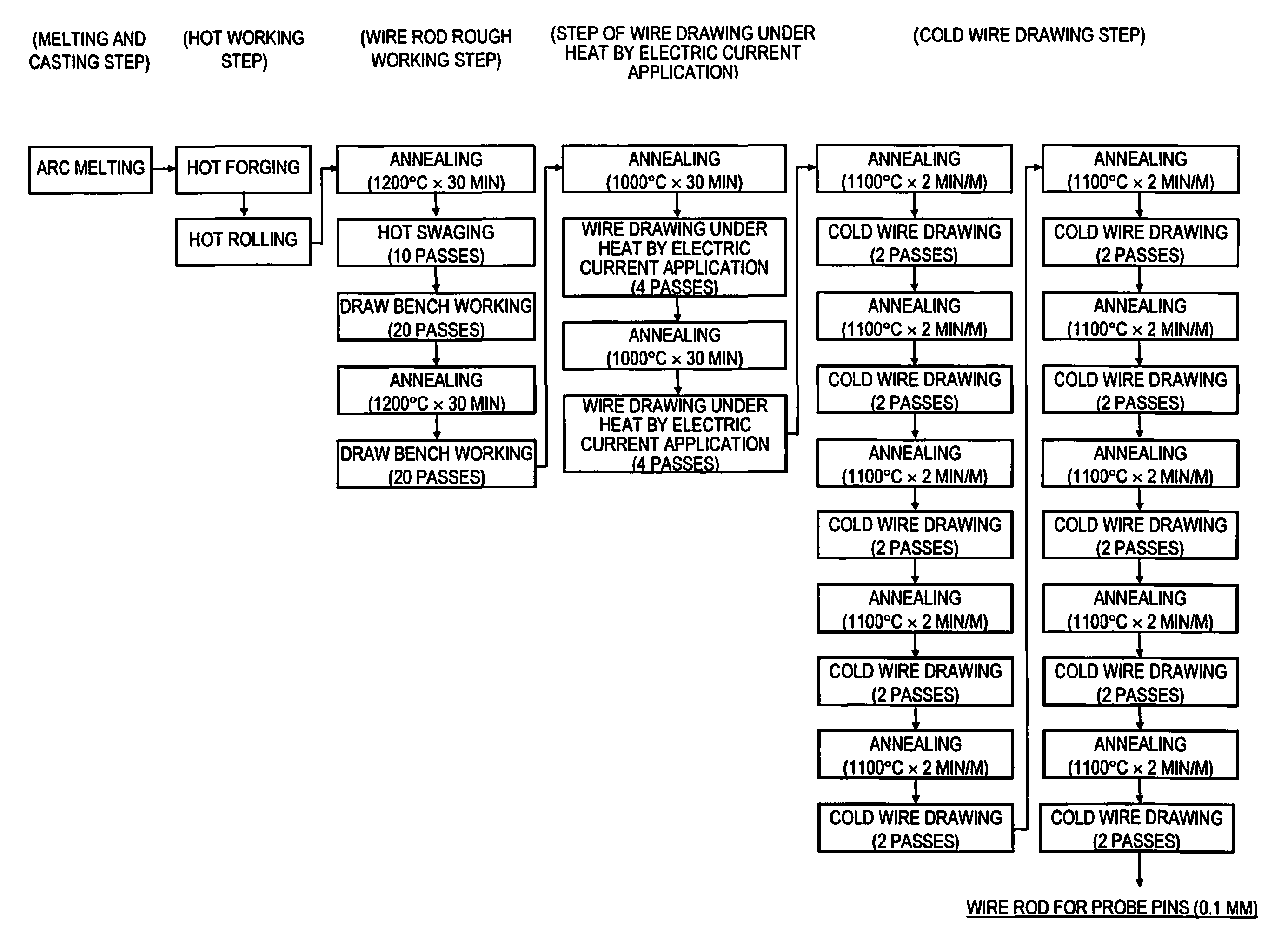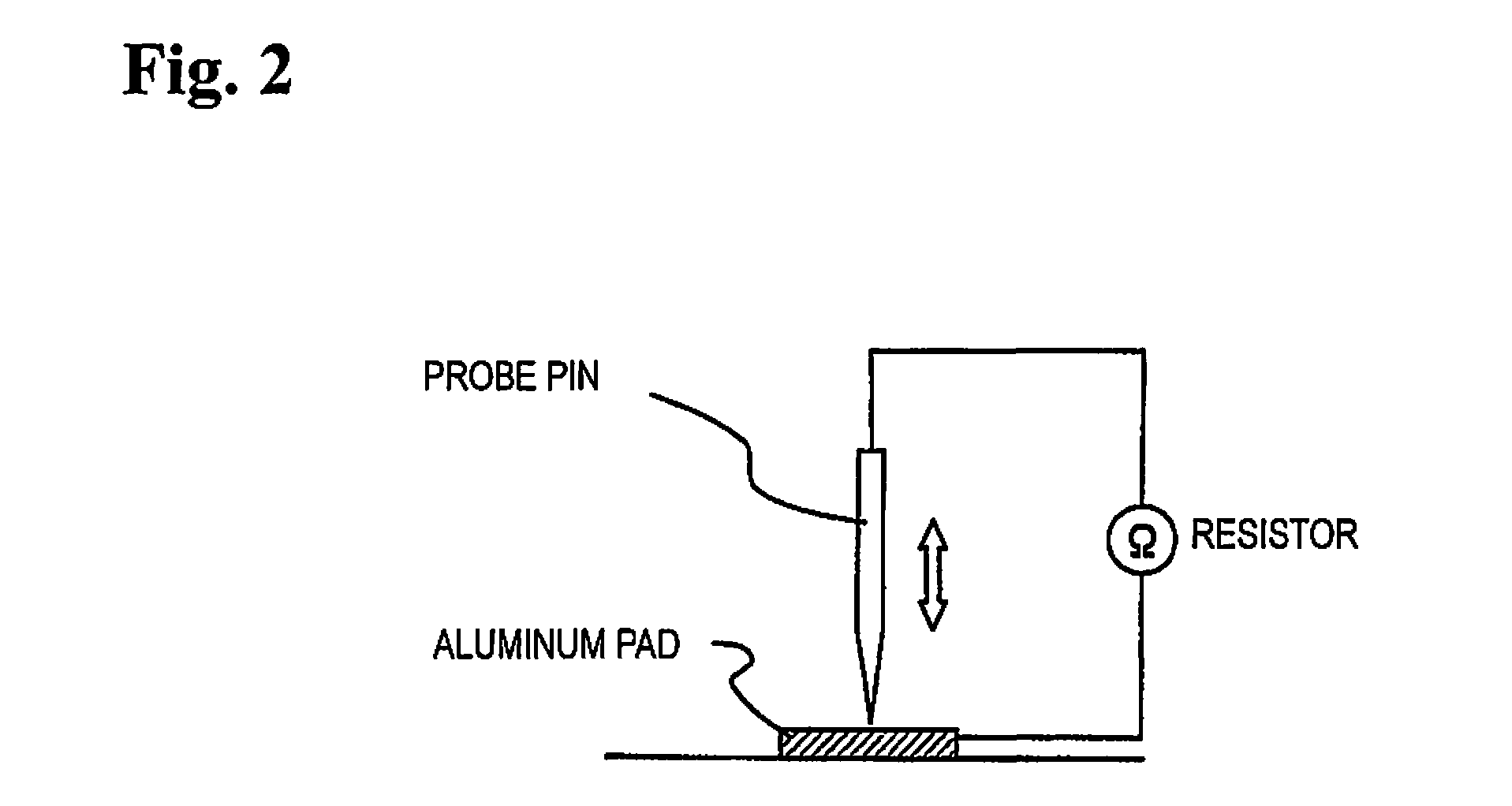Iridium alloy excellent in hardness, workability and anti-contamination properties
a technology of iridium alloy and hardness, applied in the field of iridium alloy, can solve the problems of palladium alloy being somewhat inferior in hardness, not providing all the required properties, etc., and achieve the effect of ensuring workability and reducing strength
- Summary
- Abstract
- Description
- Claims
- Application Information
AI Technical Summary
Benefits of technology
Problems solved by technology
Method used
Image
Examples
Embodiment Construction
[0031]A preferred embodiment of the present invention is described below. In this embodiment, iridium alloys in which the additive amounts of zirconium, aluminum and copper were appropriately changed were manufactured, and an investigation was made as to whether these iridium alloys can be worked into wire rods.
[0032]FIG. 1 shows the manufacturing process of a wire rod for probe pins in this embodiment. This manufacturing process is broadly divided into a melting (casting) step, a hot working step, a wire rod rough working step, a step of wire drawing under heat by electric current application, and a cold wire drawing step. Each step will be described below.
[0033]: A pure iridium powder and powders of additive elements (zirconium, aluminum, copper) were weighed and mixed to obtain a prescribed composition, and a bar-like iridium alloy ingot was manufactured by arc melting the mixture.
[0034]: The above-described bar-like ingot was hot forged at 1400° C., and a bar of 8 mm square was ...
PUM
| Property | Measurement | Unit |
|---|---|---|
| diameters | aaaaa | aaaaa |
| diameters | aaaaa | aaaaa |
| diameters | aaaaa | aaaaa |
Abstract
Description
Claims
Application Information
 Login to View More
Login to View More - R&D
- Intellectual Property
- Life Sciences
- Materials
- Tech Scout
- Unparalleled Data Quality
- Higher Quality Content
- 60% Fewer Hallucinations
Browse by: Latest US Patents, China's latest patents, Technical Efficacy Thesaurus, Application Domain, Technology Topic, Popular Technical Reports.
© 2025 PatSnap. All rights reserved.Legal|Privacy policy|Modern Slavery Act Transparency Statement|Sitemap|About US| Contact US: help@patsnap.com



